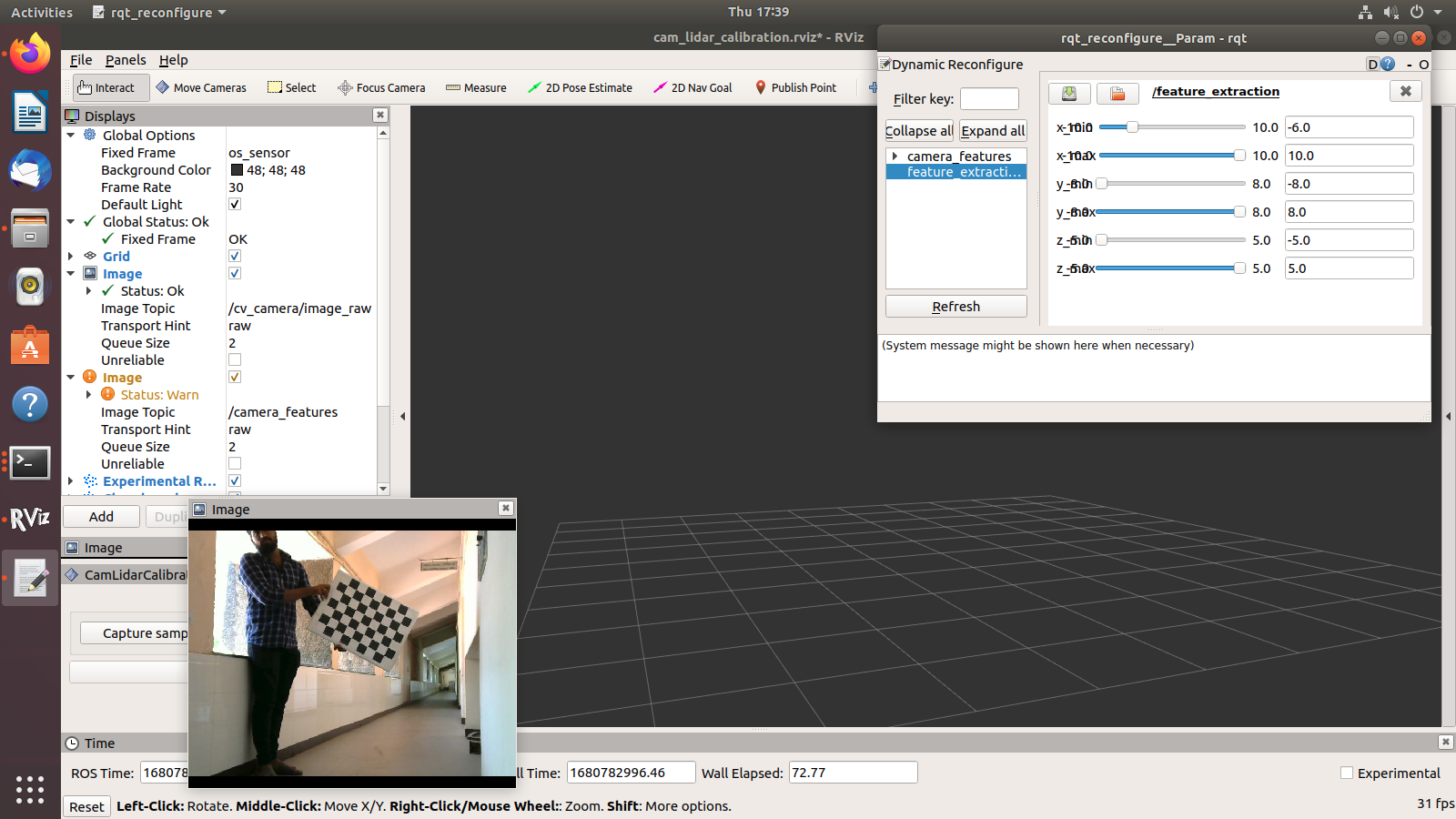Measured board has: dimensions = 576.02389 x 989.93934 mm; area = 0.56602m^2
Distance = 0.00 m
Board angles = 96.97,89.20,90.47,98.25 degrees
Board area = 0.57054 m^2 (+0.00452 m^2)
Board avg height = 989.94mm (+9.07mm)
Board avg width = 576.02mm (-1.03mm)
Board dim = 567.52,953.30,1026.57,584.53 mm
Board dim error = 90.28
Avg Lidar Normal = -0.15, -0.99, 0.04
Avg Lidar Centre = 545.69, 2175.47, -74.88
Std Dev Lidar Normal = 0.00, 0.00, 0.00
Std Dev Lidar Centre = 3.00, 1.57, 1.53
the Distance is always 0.
// Board dimension errors
double w0_diff = abs( avg_w0 - board_width_ );
double w1_diff = abs( avg_w1 - board_width_ );
double h0_diff = abs( avg_h0 - board_height_ );
double h1_diff = abs( avg_h1 - board_height_ );
double be_dim_err = w0_diff + w1_diff + h0_diff + h1_diff;
double distance = sqrt( pow( sample.lidar_centre.x / 1000 - 0, 2 ) + pow( sample.lidar_centre.y / 1000 - 0, 2 ) +
pow( sample.lidar_centre.z / 1000 - 0, 2 ) );
ROS_INFO_STREAM( "On Line: " << __LINE__ << " Distance: " << distance << " m" );
ROS_INFO_STREAM( "On Line: " << __LINE__ << " Lidar Centre: " << sample.lidar_centre.x << ", " << sample.lidar_centre.y << ", " << sample.lidar_centre.z );
sample.camera_centre = cv::Point3d( sum_camera_centre.x / samples_.size(), sum_camera_centre.y / samples_.size(),
sum_camera_centre.z / samples_.size() );
sample.camera_normal = cv::Point3d( sum_camera_normal.x / samples_.size(), sum_camera_normal.y / samples_.size(),
sum_camera_normal.z / samples_.size() );
sample.camera_corners = { avg_camera_c0, avg_camera_c1, avg_camera_c2, avg_camera_c3 };
sample.lidar_centre = cv::Point3d( sum_lidar_centre.x / samples_.size(), sum_lidar_centre.y / samples_.size(),
sum_lidar_centre.z / samples_.size() );
ROS_INFO_STREAM( "On Line: " << __LINE__ << " Distance: " << distance << " m" );
ROS_INFO_STREAM( "On Line: " << __LINE__ << " Lidar Centre: " << sum_lidar_centre.x / samples_.size() << ", " << sum_lidar_centre.y / samples_.size() << ", " << sum_lidar_centre.z / samples_.size() );
sample.lidar_normal = cv::Point3d( sum_lidar_normal.x / samples_.size(), sum_lidar_normal.y / samples_.size(), sum_lidar_normal.z / samples_.size() );
the variable distance is calculated with sample.lidar_centre, but it it update below, that cause distance always zero
































